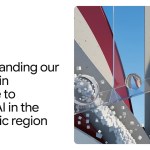How Are Phones Part of the Student Experience in College?
When students arrive on a college campus, they expect the same conveniences, connectivity and technology they’re accustomed to. They want to interact with their university in a seamless, easy-to-understand way, whether that’s through a centralized app or intranet, a universitywide chatbot, or a website with a comprehensible user experience.
Delivering that kind of technological smoothness creates a frictionless student experience, one where students feels comfortable and confident that their institution is making their lives easier, not harder. Ask a new college enrollee when they last dialed a phone number, and you’ll learn very quickly where making a call to the registrar ranks on their list of priorities.
That doesn’t mean they don’t want information, and it definitely doesn’t mean they don’t have questions they want someone to answer. It’s just that students want to ask questions in the way they’re used to (such as chat or video) and be able to touch base with everyone from their adviser to their instructor and the finance office without going to three different places.
CPaaS allows colleges and universities to move away from traditional phone systems and toward a multifaceted platform that includes text messaging, meetings, video, shared websites and, of course, voice calling. It’s also where artificial intelligence can be deployed, today and in the future, to improve the quality of communication being delivered.
These contact centers can be a one-stop answer shop for college students looking for info or for high schoolers and their families making college decisions. Don’t turn them off with clunky, unreliable, out-of-date technology.
RELATED: A managed services provider can solve these three challenges for better collaboration.
Why Do Universities Need Any Kind of Phone System?
If students don’t want to call anyone on the phone, employees want to recapture desk space (or work from home, where they likely don’t have a landline), and POTS systems are headed for retirement, why does voice calling have to be part of a university’s consolidated communication approach at all?
For one thing, there are government regulations when it comes to telecom. Elevators need phones in them in case they stop working, fire alarms are often wired to phone systems, and some universities still use fax machines to send and receive messages.
Most critically, colleges need phones for emergency notifications and 911 location tracking. The Federal Communications Commission requires any type of phone to provide a “dispatchable location” so that first responders can be confident they’re responding to the right place. And those elevator phones are still a requirement, even if they are connected via the cloud.
Reliability concerns that once made institutions cautious about cloud services have largely disappeared as Internet of Things technology and an alphabet soup of “as a service” solutions have become common in higher education. And just like the old POTS systems, cloud collaboration providers such as CDW offer redundancies and backups in the rare case of an outage. Cloud providers have girded against this too, with the largest vendors offering multiple data centers to ensure calls can be completed even if one data center is offline.
Click the banner to learn how CDW transformed a Kansas community college’s call center.
Source link
#Goodbye #Landlines #Cloud #Collaboration










